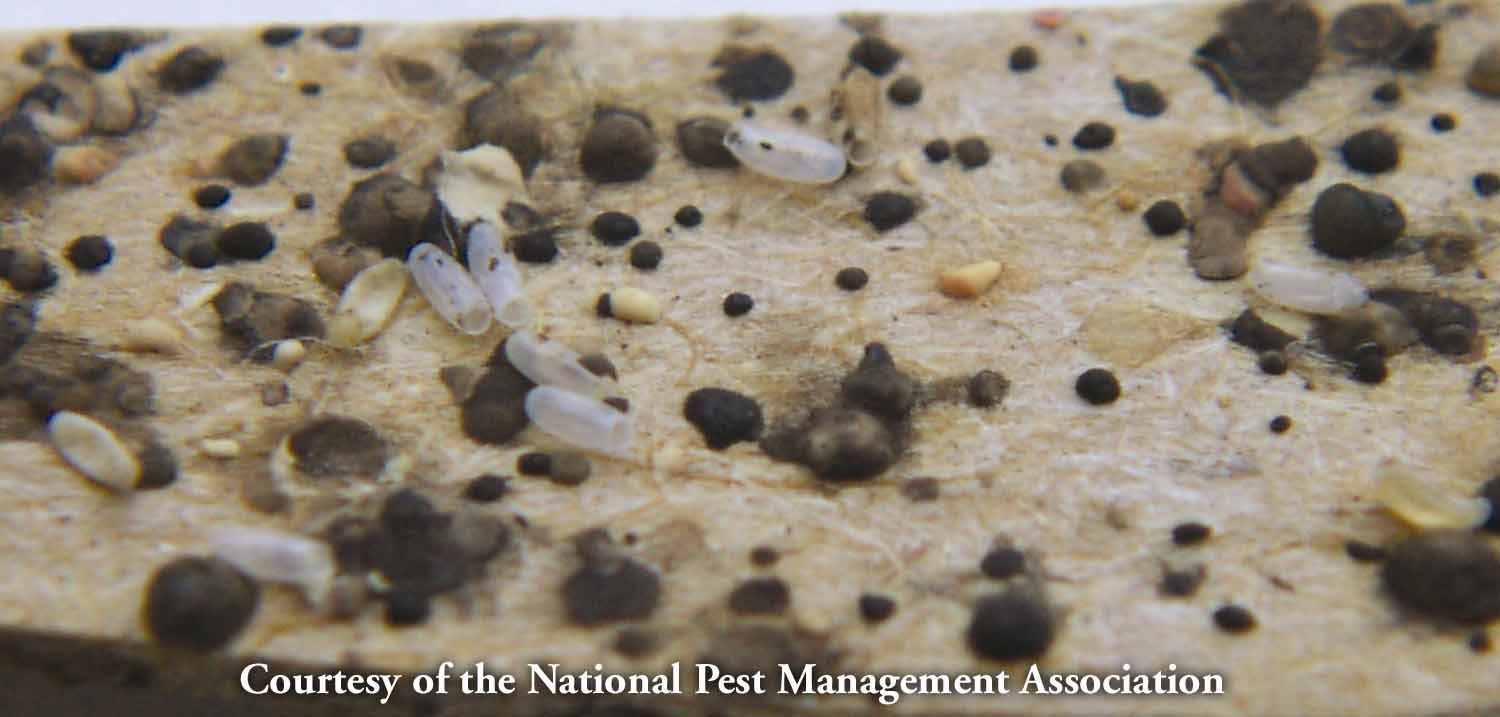 Arizona Bed Bug Laws
Arizona Bed Bug Laws
Be it enacted by the Legislature of the State of Arizona:
Section 1. Title 9, chapter 4, article 8, Arizona Revised Statutes, is amended by adding section 9-500.30, to read:
9-500.30. Prohibition on adopting landlord tenant bedbug control requirements
A. Except as provided in subsection B of this section, a city or town shall not adopt requirements by ordinance or otherwise for landlords or tenants that relate to the control of bedbugs as defined in section 33-1319, other than the requirements prescribed by section 33-1319.
B. A city or town may adopt requirements relating to the proper disposal of items that are infested with bedbugs.
Sec. 2. Title 11, chapter 2, article 4, Arizona Revised Statutes, is amended by adding section 11-269.10, to read:
11-269.10. Prohibition on adopting landlord tenant bedbug control requirements
A. Except as provided in subsection B of this section the board of supervisors and any other person under the authority of the board of supervisors shall not adopt requirements by ordinance or otherwise for landlords or tenants that relate to the control of bedbugs as defined in section 33-1319, other than the requirements prescribed by section 33-1319.
B. The board of supervisors or a person under the authority of the board of supervisors may adopt requirements relating to the proper disposal of items that are infested with bedbugs.
Sec. 3. Title 33, chapter 10, article 1, Arizona Revised Statutes, is amended by adding section 33-1319, to read:
33-1319. Bedbug control; landlord and tenant obligations; definitions
A. A landlord has the following obligations with respect to a bedbug infestation:
1. As a portion of its obligations under section 33-1324, the landlord shall maintain the dwelling unit free of an infestation of bedbugs.
2. The landlord shall provide existing tenants with a copy of this section on or before September 1, 2011 by personal delivery or first class mail and shall provide new tenants with a copy of this section on commencement of a new lease. The landlord also shall provide educational materials to existing and new tenants. Educational materials may include:
(a) A description of measures that may be taken to prevent and control bedbugs.
(b) Information about bedbugs, including a description of their appearance.
(c) A description of behaviors that are risk factors for attracting bedbugs such as purchasing renovated mattresses, using discarded mattresses and furniture, using used or leased furniture, purchasing pre-owned clothing and traveling without proper precautions.
(d) Information provided by the United States centers for disease control and prevention and other federal, state or local health agencies.
(e) Information provided by federal, state or local housing agencies.
(f) Information provided by nonprofit housing organizations.
3. The landlord shall not enter into any lease agreement with a tenant for a dwelling unit that the landlord knows to have a current bedbug infestation.
4. Within seven business days after receiving written or electronic notice of a possible bedbug infestation from a tenant, the landlord or the landlord’s licensed pest control applicator shall visually inspect the dwelling unit for bedbugs. Within seven business days after finding evidence that a bedbug infestation exists in the dwelling unit, the landlord shall start the process of mitigation of the bedbugs in the dwelling unit.
5. Unless the landlord is a licensed applicator, the landlord shall not use any pest control techniques that constitute mitigation and shall use for mitigation a pest control applicator who is licensed pursuant to title 32, chapter 22.
6. The landlord shall provide the tenant with written notice of the bedbug mitigation treatment protocol at least three business days before the initial treatment. Notice shall be deemed received by the tenant on the date the notice is personally delivered or mailed first class.
7. Unless otherwise provided in this section, the landlord is responsible for the bedbug mitigation expenses for the dwelling unit and any surrounding units that are infested.
B. A tenant has the following obligations with respect to a bedbug infestation:
1. As a portion of the tenant’s obligations under section 33-1341, the tenant shall maintain the dwelling unit free of an infestation of bedbugs.
2. The tenant shall not move materials into a dwelling unit that are infested with bedbugs.
3. A tenant who knows of the presence of bedbugs shall provide the landlord written or electronic notification of the presence of bedbugs in the dwelling unit within three business days. Notice that is provided by the tenant pursuant to this paragraph constitutes permission to the landlord to enter the dwelling unit for the sole purpose of inspecting for or mitigation of bedbugs.
4. After receiving notice from the landlord of a bedbug inspection or mitigation as provided in subsection a of this section, the tenant shall allow the landlord and the landlord’s licensed pest control applicator access to the dwelling unit.
5. The tenant shall comply with the bedbug mitigation protocol established by the licensed applicator, which may include pretreatment activities, temporary evacuation of the dwelling unit, posttreatment activities and an obligation to report the ineffective treatment or reinfestation to the landlord within three business days.
6. The tenant shall not apply or permit any unlicensed person to apply any bedbug control techniques that constitute mitigation.
7. If a landlord fails to inspect and, if necessary, mitigate a bedbug infestation within the time prescribed in subsection A of this section, the tenant shall provide written notice to the landlord of the tenant’s intention to correct the condition at the landlord’s expense. If the landlord fails to correct the condition within ten days after being notified by the tenant in writing, the tenant may cause the work to be done by a licensed pest control applicator, submit to the landlord an itemized statement for the pest control services and deduct from any rent due the actual and reasonable cost of the pest control treatment not to exceed five hundred dollars or one‑half of the monthly rent, whichever is greater.
8. If the tenant fails to comply with any of the obligations prescribed in this section, the tenant may be held financially responsible for bedbug mitigation expenses for the dwelling unit and surrounding units that are infested.
C. The landlord and tenant of a single family residence may agree that the tenant is responsible for bedbug mitigation as provided in section 33‑1324, subsection c.
D. A landlord is deemed to have successfully mitigated a bedbug infestation on completion of bedbug treatment by a licensed pest control applicator.
E. This section does not limit the landlord’s or tenant’s rights and obligations under this chapter.
F. Except as specifically provided in this section, this section does not create a cause of action against:
1. A landlord or a landlord’s employees, officers, agents and directors by a tenant or a tenant’s guests for any damages caused by bedbugs.
2. A tenant by a landlord for any damages caused by bedbugs.
G. For the purposes of this section:
1. ”Bedbug mitigation expenses” means the reasonable and necessary cost of the pest control treatment or treatments and may include the cleaning, removal and replacement of flooring if reasonably required by the degree of infestation.
2. ”Bedbugs” means any insect in the genus cimex and its eggs.
3. ”Infestation” or “infested” means that the presence of bedbugs is sufficient to materially affect the health and safety of tenants and their guests.
4. ”Mitigation” means the process undertaken by a pest control applicator who is licensed pursuant to title 32, chapter 22 to attempt to eliminate or manage the infestation of bedbugs by poisoning, spraying, fumigating, trapping or any other recognized and lawful pest control method, including repeated applications of any treatment, particularly to areas where bedbugs are likely to congregate.
5. ”Surrounding unit” means a dwelling unit that shares a common wall with, or that is directly above or below, another dwelling unit.











 Arizona Bed Bug Laws
Arizona Bed Bug Laws

